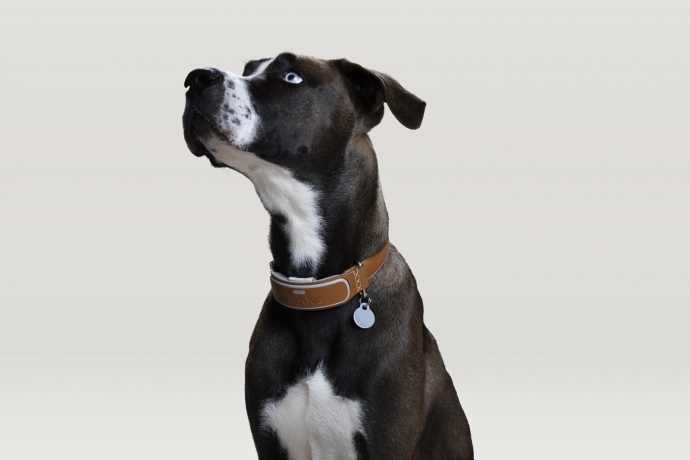To most people, dog collars only differ in size, shape, material and color. These are the easiest things to see and they serve as the main criteria for the selection of our canine pets’ most important accessories. However, there’s a lot more to choosing a collar than meets the eye. The style of the collar can have a significant impact on your dog’s overall comfort level and the product’s total lifespan.

If you’re shopping for a collar, there are several different types that you’ll likely see. Here they are along with their pros and cons to help you select the best one for your mutt:
Flat Collars
Flat collars are the most common style of dog collar. They’re inexpensive, light and are easy to slip on and off the necks of pets. They’re also very good for long-haired dogs as the round design keeps fur tangles to a minimum. When the correct size is selected for a dog, these collars are pretty comfortable and they shouldn’t cause strain on your pet’s neck.
However, these collars do carry some risks for very active dogs. Canines who like to run while on a leash connected to a round collar can experience pressure buildup on the neck that can reach the eyeballs. Cases of dog glaucoma and cornea thinning have been linked to the use of this type of collar. On occasion, rough play between active dogs can result in one of the dogs’ teeth getting stuck on the collar which may cause choking as the two dogs panic and try to pull away.
Martingales
Martingale collars are popular among dog owners for good reason: they’re comfortable around your pet’s neck but they’re also very safe and secure. Martingales have a pair of webbing loops that tighten up to a certain degree when a dog moves. This prevents dogs with large necks and small heads from wiggling out of the collar and giving you a hard time chasing after them. Despite the tightening, the collar will stop at a certain point which prevents accidental strangulation even on large, active dog breeds.
As you may guess, Martingales are highly durable and can take lots of abuse even from dogs who like to play with speed and force. They can be a little more costly than simpler flat collars, but experienced dog owners know that they’re worth the extra dollars.
Harnesses
Dog harnesses are used these days for pets, but they trace their origins back to the days when larger dogs were used for pulling carts in Europe and sled dogs were common in Alaska. These days, harnesses are more popular for pet canines thanks to the comfort and durability that they were designed for.
Instead of wrapping solely around the neck, harnesses are wrapped around the torso. This prevents active dogs from straining their necks and even choking while trying to pull away. A harness distributes the stress of a dog and a human pulling on a leash to the dog’s back which can absorb more stress than its neck. This helps increase the safety of your dog and prevents it from developing neck disorders during its advanced age.
Harnesses, of course, can feel more cumbersome to a dog and will take some getting used to. They’re also more expensive than regular collars. Still, plenty of pet owners can see their value especially during walks and playtime.
Chain Chokers
As the name suggests, a choke chain is a type of collar that’s made of interlinked chains shaped into a loop. It’s a favorite among professional trainers of large dogs, but has waned in popularity during the past decade or so.
This is due to the fact that choke chains were designed to train a dog through pressure on its neck as a trainer yanks on the leash each time a dog misbehaves. Many dog lovers argue that training a dog through “punishment” is unethical and has no place in modern pet owner behavior. While there’s still a lot of debate going on around the topic, many dog owners have simply avoided choke chains due to their reputation and overall appearance.
That’s not to say that choke chains don’t have merit at all. These are very durable dog collars that can handle the force of big, muscular mutts pulling on it. Their effectiveness in training is undeniable when used properly, and they’re the best at staying securely placed around a pet’s neck despite a dog’s attempts to get it off.
Pinch collars are considered related and less aversive devices. However, they are still considered by many as a crude way to restrain and train dogs.
Ultimately, it’s best to choose a collar with a dog’s comfort and well-being in mind. It also helps if the collar gives the owner an easier time in guiding the dog during walks or playtime. If you still need more information, consider consulting a veterinarian who can recommend a collar type that’s most appropriate for your canine.

